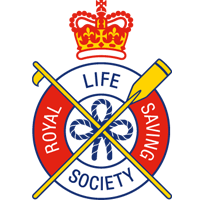There’s a lot of mythology surrounding rip currents. Just the name alone conjures fear for some water users and while you should have a healthy respect for them so long as you know what to do when you are in one you need not panic. The key is to learn how to identify rip currents and avoid getting caught in one.
How to Identify a Rip Current
The best place to start is to explain what a rip current is and why it forms.
When you look out to sea you will be able to see waves marching towards shore. These waves are made of millions of litres of water which all need to make their way back out to sea (otherwise the waves would be continually coming onto land until eventually everything was underwater!). This water finds it’s way back out by the easiest way possible – sometimes by a permanent feature like a headland, groyne or a river mouth (a static or permanent rip) and sometimes spontaneously at a random place on the beach (a flash rip).
The Three Parts of a Rip Current
A rip is literally a body of water moving out to sea and consists of three parts –
- Feeder
- Neck
- Head
The feeder is the part close to the shore where the waves have expired and are finding a path back out to sea. Often this will be moving sideways across the beach (parallel to the shore), slowly at first but increasing in power and speed by the neck.
The neck is the bit you will want to avoid. This will be where the rip is at its most powerful and is heading out to sea (perpendicular to the shore). There may even be two ‘feeds’, one from either side.
Finally the rip dissipates at the head as the water is pooled beyond the breaking waves ready to begin the cycle again.
What Does a Rip Current Look Like?
The thing that you will notice is that they look a bit out of place with the rest of the sea. Usually you will see waves coming to shore while the rip will have no waves at all. It may have a stained or brown tint (sand being dragged out in it) and it may be choppy with white horses on an otherwise windless day. You may also notice white foam extending beyond the breaking waves. The rip will probably have a darker appearance as the water will be a lot deeper there.
What Do I Do If I am Caught in a Rip Current?
We know that the rip will finish once it has travelled beyond the breaking waves so there are two things that you can do.
- Go with it. The furthest it will take you is beyond the breaking waves so enjoy the ride, wait till it slows down and paddle back towards shore a little bit further up or down the beach. Then catch a wave back in as normal.
- Paddle across the rip (parallel to the shore) and back into the breaking waves. Rips aren’t very wide, 100m at the most but usually more like 20m accross. Then catch a wave back in as normal.
There are a few things that you shouldn’t do however.
- don’t panic – easy for me to say but you will have to remind yourself this. Remember that the rip current will stop eventually
- don’t ditch your surfboard/bodyboard/inflatable – your surfboard is a heady cocktail of plastic and foam that will be floating for the next 400 years or so – keep hold of it.
- don’t fight it – under no circumstances should you try to paddle against it. You will just tire yourself out and get nowhere.
Hope this helps and that you enjoyed the surf tip.




